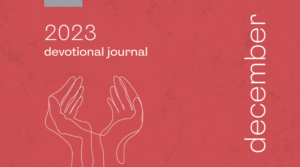Deeper ReflectionThe date, “the third year of Cyrus king of Persia” (v.1), in which
Daniel received the Daniel 10 to 12 vision from God is significant. In
“the first year of Cyrus” (538 BC), the Persian king made a decree
for Israel in exile to return to Jerusalem to rebuild the temple (Ezr 1:1-4).
Then “in the second year” of their return, Israel laid the foundation of the
temple, “praising and giving thanks to the LORD, saying, ‘He is good and
His unfailing love is upon Israel forever’” (Ezr 3:8-11). But shortly after,
Israel faced strong opposition from their enemies and the rebuilding work
“stopped” in 535 BC for 15 years (Ezr 4:1, 4-5, 24). The “third year of Cyrus”
was a time when God’s people were filled with discouragement,
37 and probably wondering, “Where is the goodness and unfailing love of God?”
It was at this time that Daniel turned to God in prayer.Broadly speaking, prayer takes on three forms.
Regular devotion to
God: We see this in Daniel, who was “on his knees three times a day,
praying and giving thanks before his God” (Dan 6:10).
Continual
communion with God: This is as Paul teaches, “Pray without ceasing”
(1 Thess 5:17). A distinguishing mark in this is we are conscious of God at
all times in all things.
Intensive seeking of God: In solidarity with his
discouraged fellow Israelites at a great distance,
38 Daniel was “mourning”, and fasted from choice food such as “meat” and “wine”, and “ointment”
that “made life more comfortable in a dry, desert climate”
39 (vv.2-3). Daniel
was “in a state of prayerful turmoil”
40 .
37 Iain M. Duguid, Daniel, Reformed Expository Commentary (P&R, 2008), 178
38 Iain M. Duguid, 179
39 Iain M. Duguid, 178
40 Tremper Longman, 247

